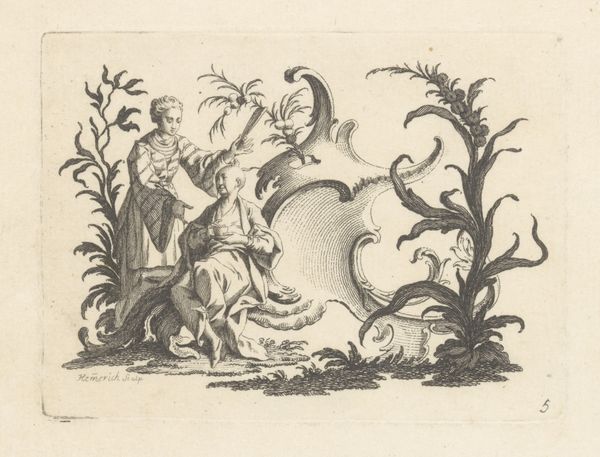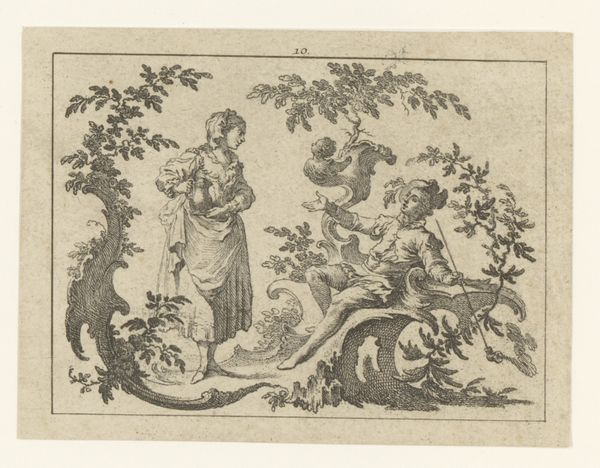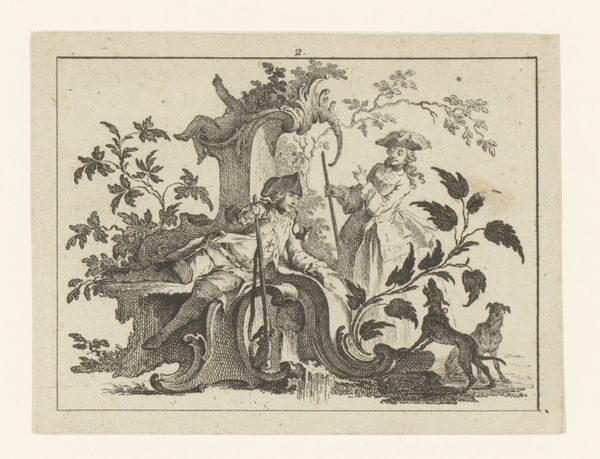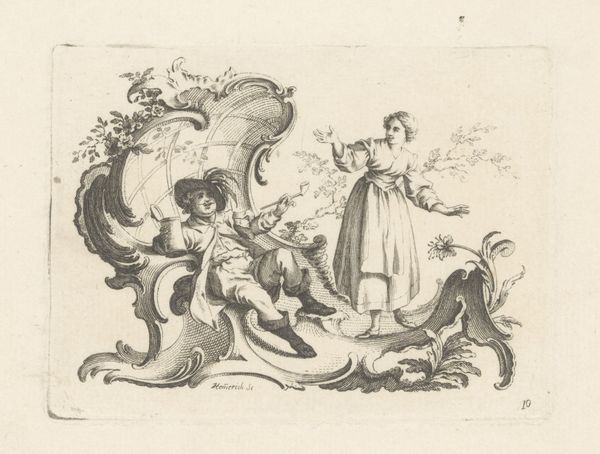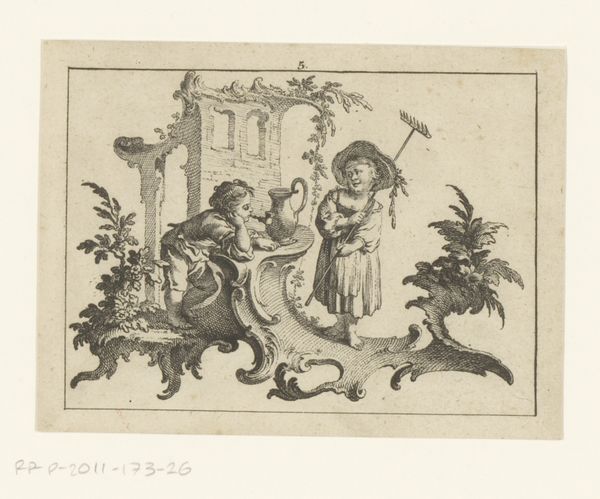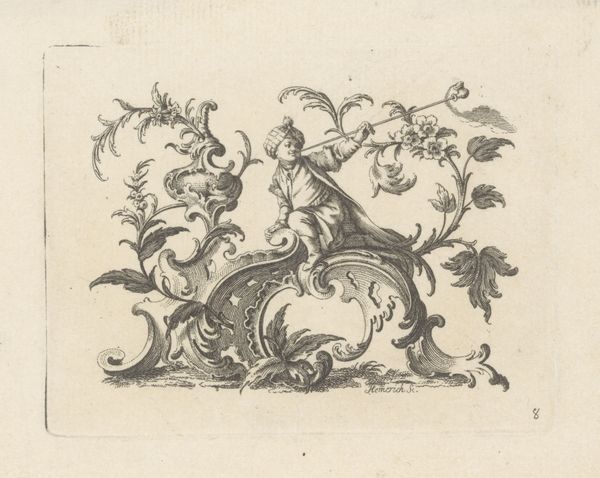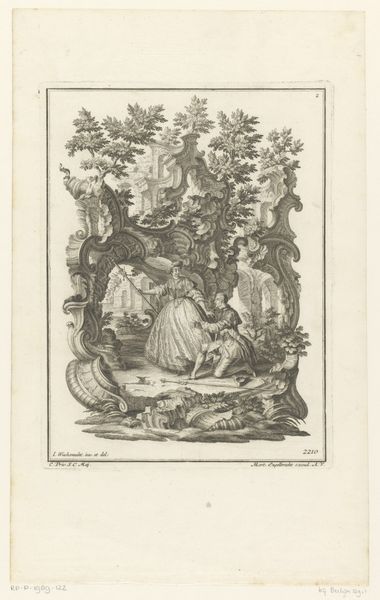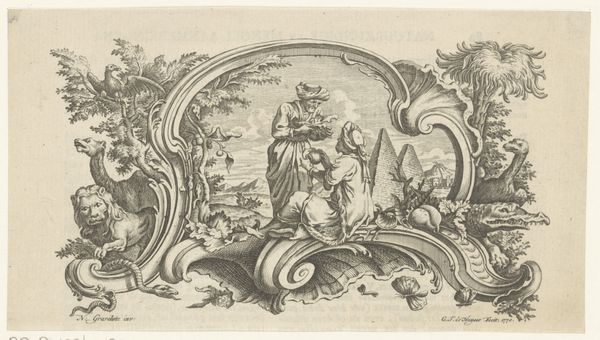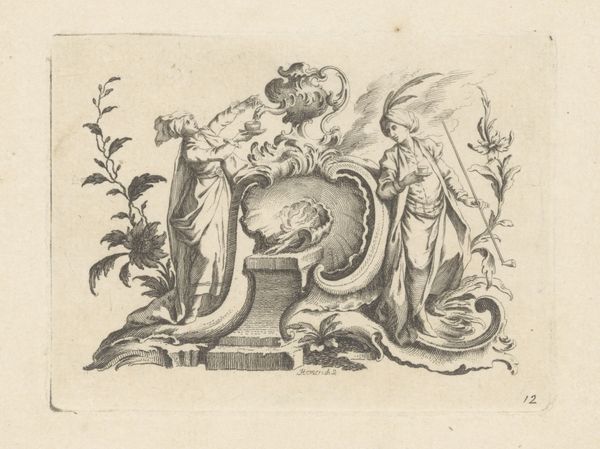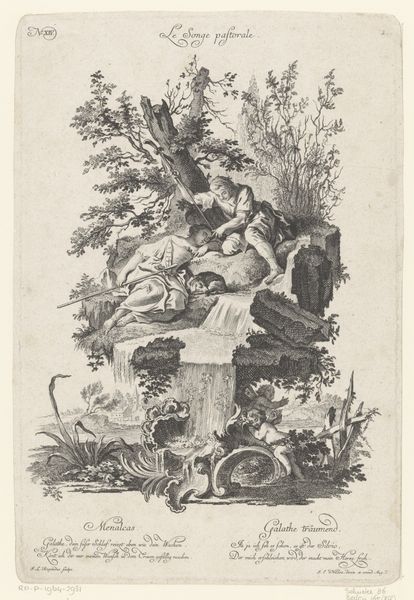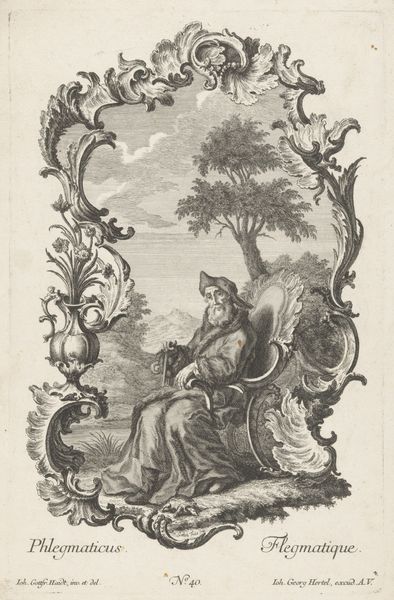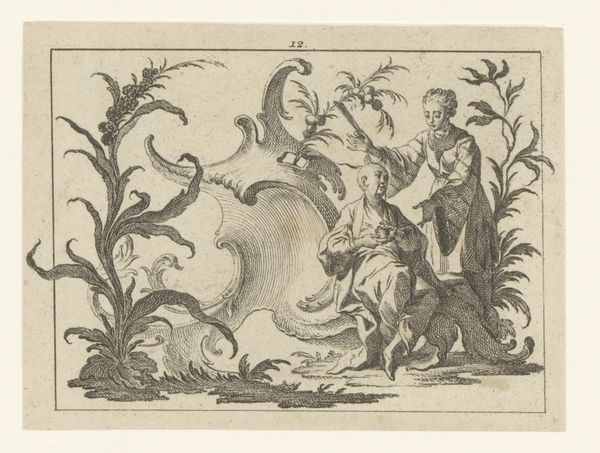
drawing, engraving
#
portrait
#
drawing
#
ink drawing
#
baroque
#
pen drawing
#
pen sketch
#
figuration
#
genre-painting
#
engraving
Dimensions: height 81 mm, width 107 mm
Copyright: Rijks Museum: Open Domain
Editor: Here we have "Man with Pipe and Woman with Jug" by Cornelius Heinrich Hemerich, an engraving made sometime between 1731 and 1780. It feels almost like a little stage set, with the figures framed by ornate foliage. What can you tell me about this work? Curator: The immediate impression speaks volumes about the prevailing modes of artistic production. This isn't merely an image, but the result of labor and industry. We see engraving, a printmaking technique. Consider the implications of that: replication, dissemination, a burgeoning market for images beyond the elite. Editor: So you’re focusing on the material process rather than just the image itself? Curator: Exactly. Think about the social context that demanded such production. Who was consuming these engravings, and what needs did they serve? Was it merely decorative, or did it play a role in shaping social narratives, perhaps about gender roles implied by the man with a pipe and woman with a jug? And how does that repetitive act of engraving impact the artistic value and intention, and its reception? Editor: That makes me think about accessibility. Were these prints more affordable than, say, paintings? Did that make art available to a wider audience? Curator: Precisely! The medium becomes a critical factor in determining accessibility. This challenges notions of art being solely the domain of the wealthy. Furthermore, notice the craftsmanship. While seemingly "simple," engravings like this demanded skilled artisans, raising questions about labor and the division between artistic vision and technical execution. How does valuing the "hand" of the artist versus mechanical reproduction play out here? Editor: That's fascinating. I hadn't thought about the social and economic forces involved in creating something that looks so…charming. Curator: It’s a reminder that art exists within a network of production and consumption. By examining the materiality and means of production, we gain insight into the broader cultural landscape of the time. This changes our view of art’s intrinsic value by bringing more factors into consideration. Editor: I’ll definitely look at engravings differently from now on!
Comments
No comments
Be the first to comment and join the conversation on the ultimate creative platform.

